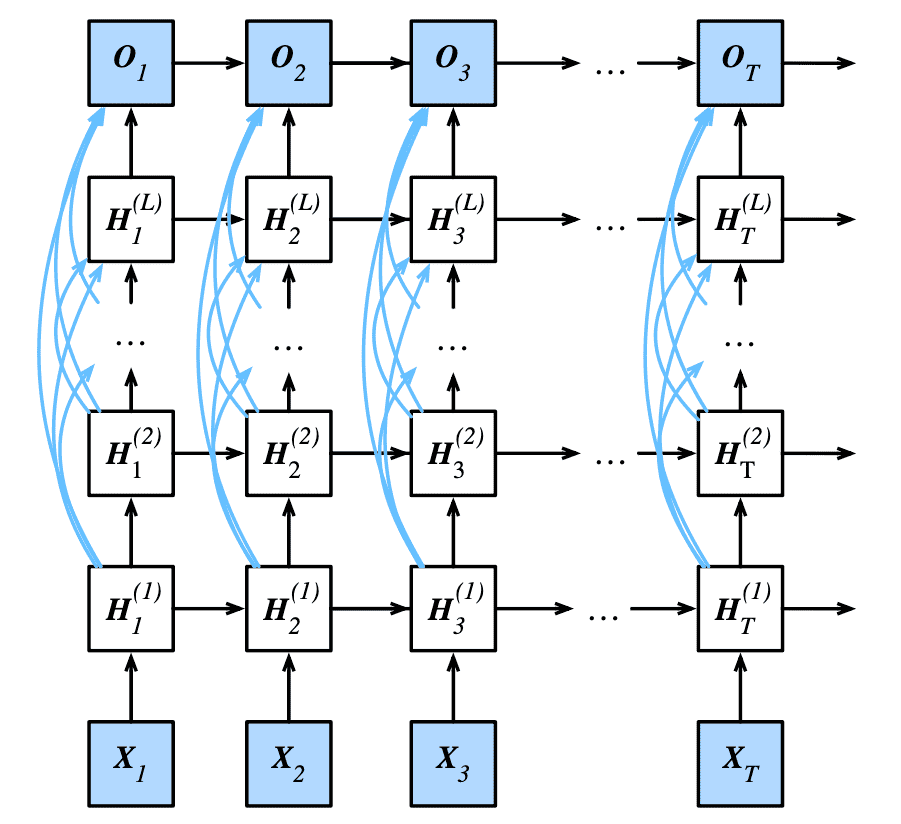07 Advanced RNN
Non-Linear Units¶
Replace \(\phi\) of updates with MLP
✅ Keeps structure of latent space
❌ Costly (due to more complex gradients)
Deep RNN¶
Rather than using just 1 hidden layer, we use more hidden layers, ie, each time stamp of RNN has multiple cells
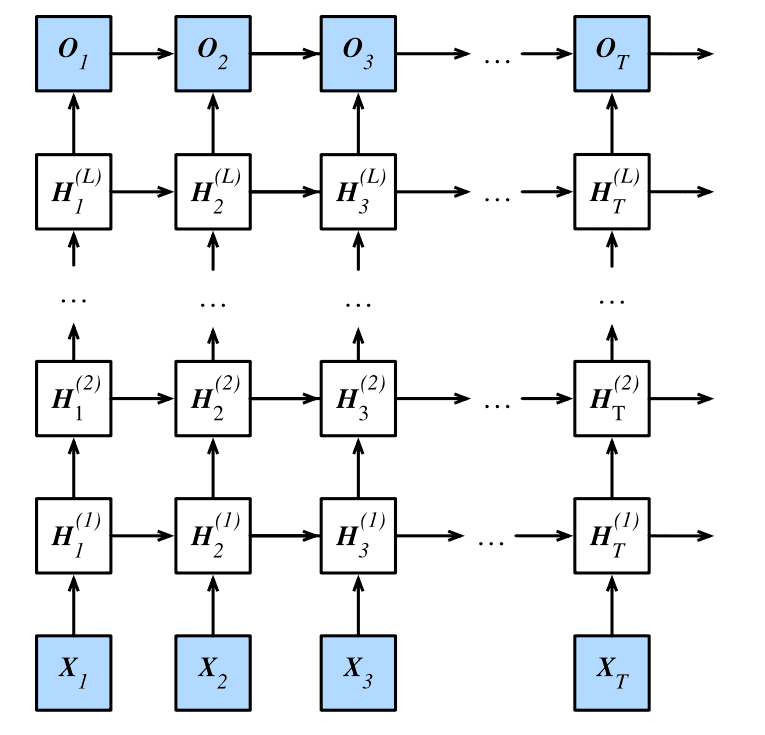
Bidirectional RNN¶
Context¶
- I am happy
- I am very hungry
- I am so hungry, I could eat 2 plates of rice
Very different words to fill in, depending on past and future context of a word
Traditional RNNs only look at the past. In interpolation (fill in) we also use the future.
Implementation¶
- One RNN forward
- One RNN backward
- Combine both hidden states for output generation
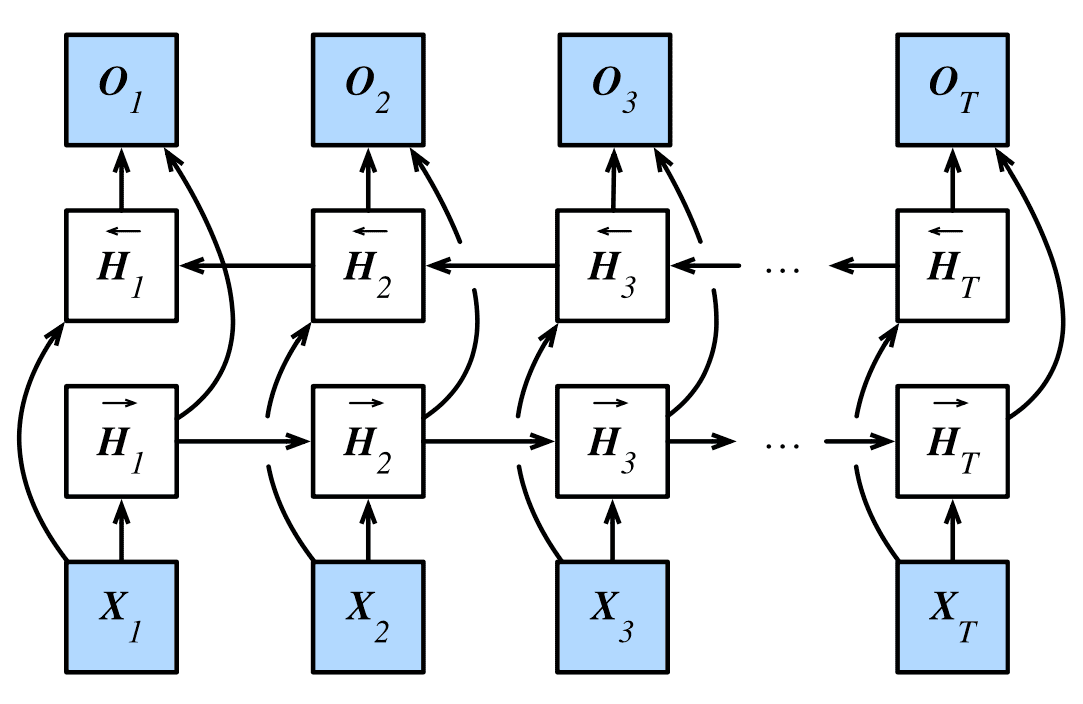
idk¶
Bi-RNN does not work for sequence generation
| Training | Testing |
|---|---|
 |  |
However, we can still use it to encode the sequence
Residual RNN¶
Input of every second layer is also added to its output (residual connection)
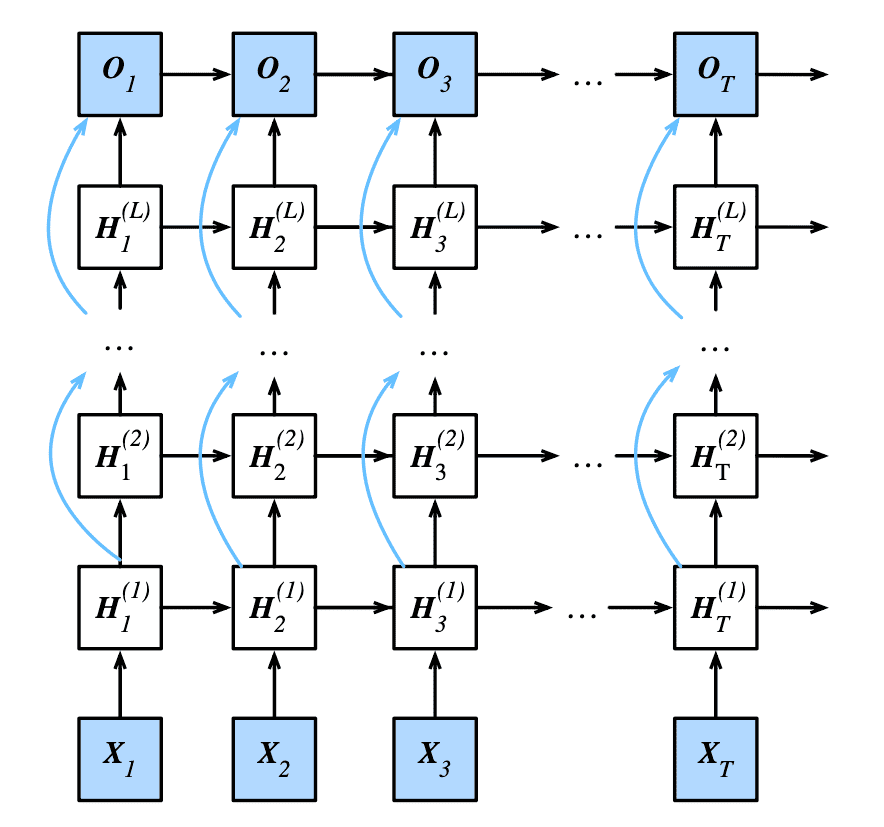
Adding Layers¶
Adding a layer to a model changes function class.
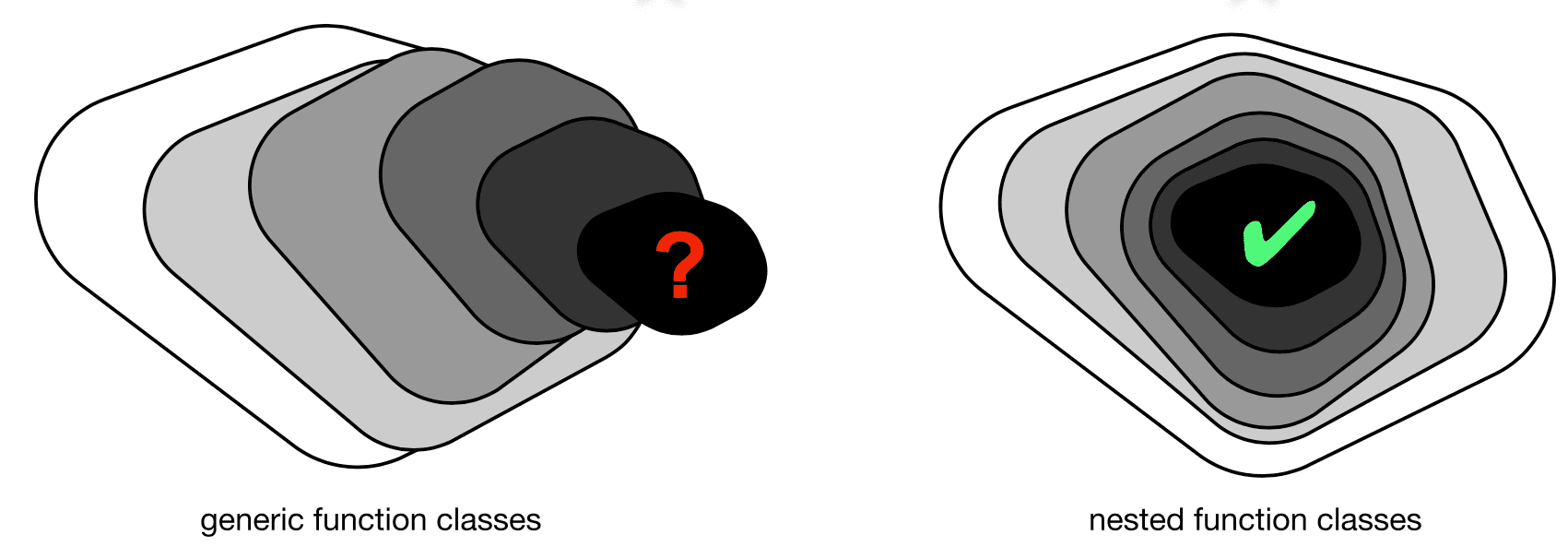
We want to add to the function class, using Taylor expansion style parametrization
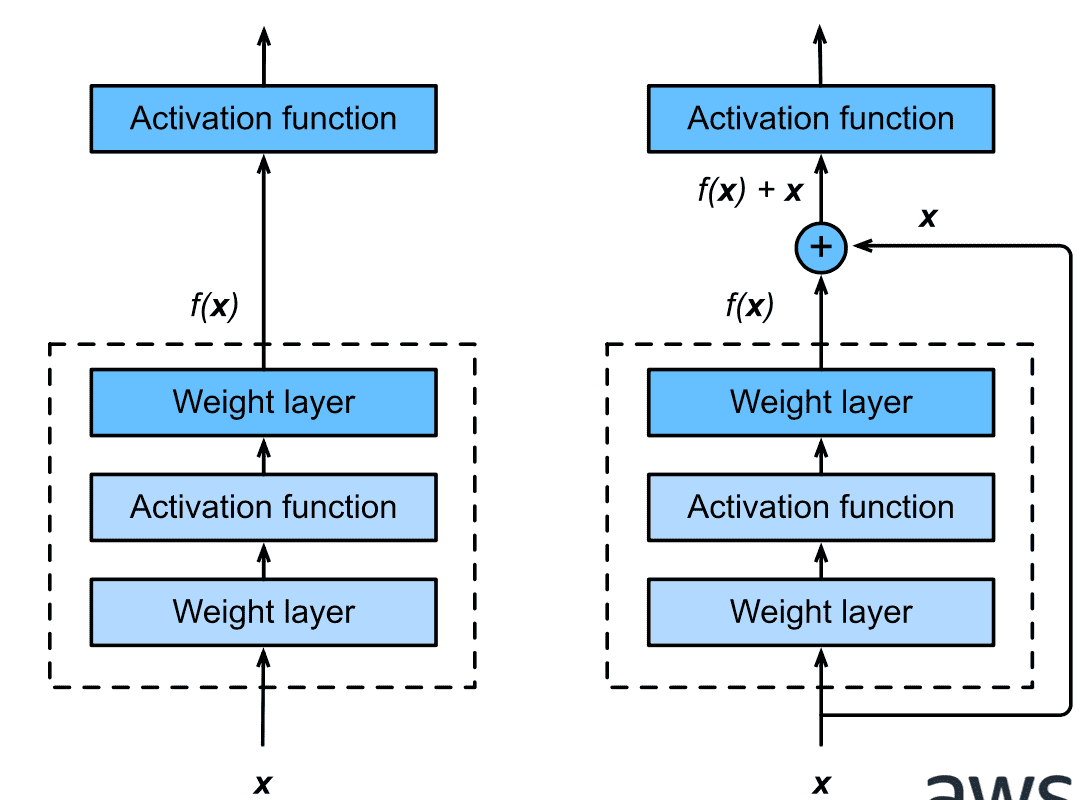
Variants¶
- Simple addition
- Nonlinearity before addition
- Could also concatenate
DenseNet RNN¶
Concatenate outputs of previous layers as input to next layer, with occasional transition layers to reduce dimensionality
